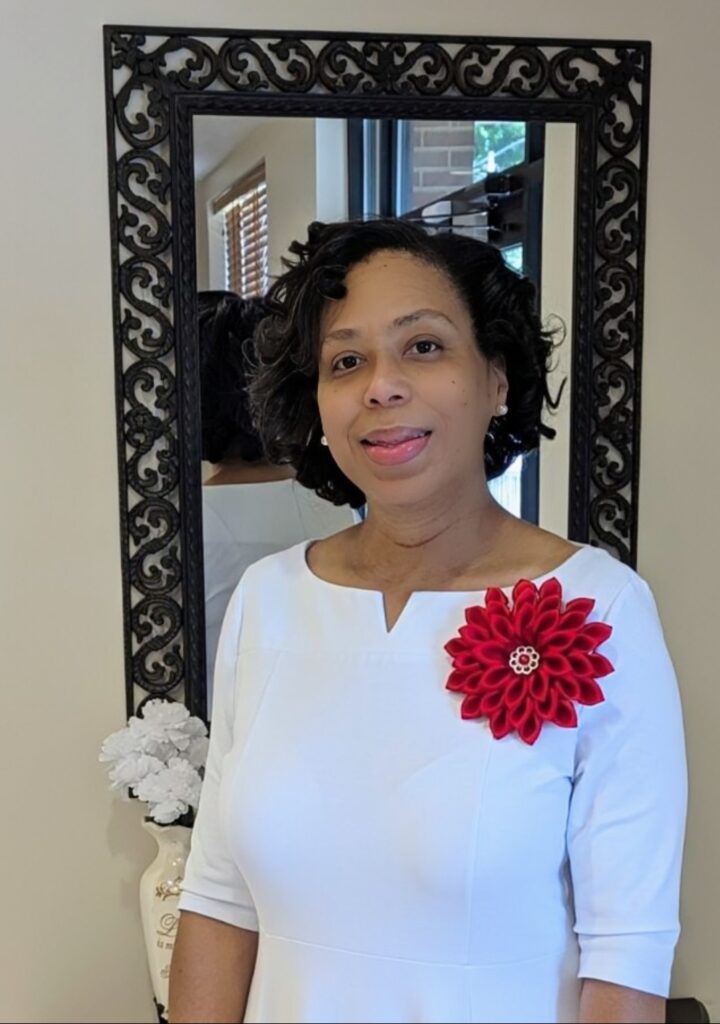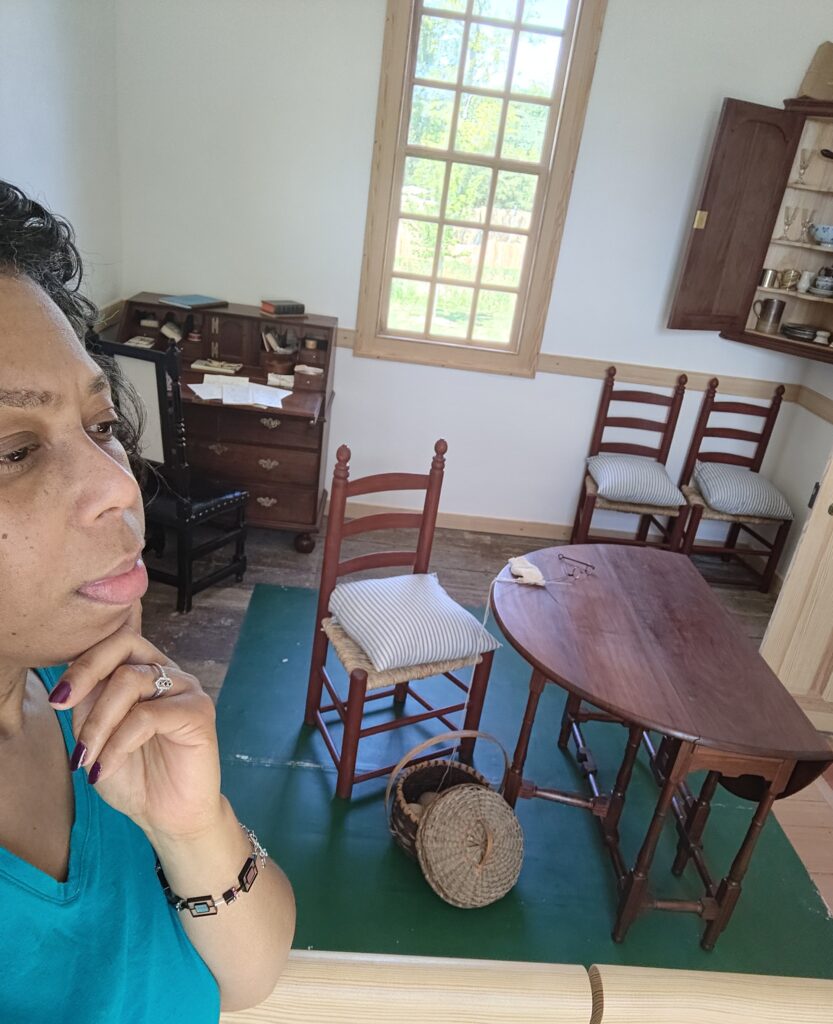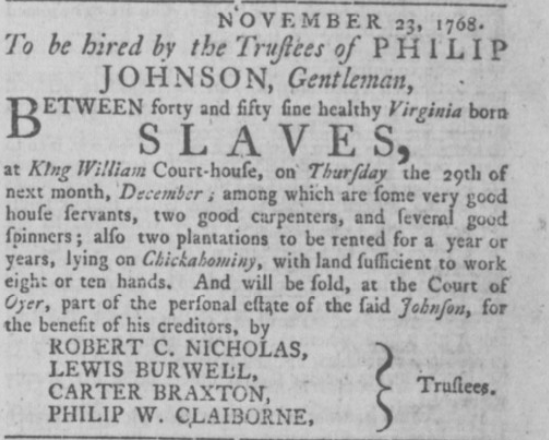by Emily Muscolina
Conducting first-hand research on the Williamsburg Bray School is an opportunity unique to William & Mary and Colonial Williamsburg, and vital to the educational missions of both institutions. Although I have only been volunteering at the W&M Bray School Lab for roughly a year, my awareness of it began much earlier.
I first learned about the Williamsburg Bray School in the summer of 2022. That summer, I was a high school student in the National Institute of American History & Democracy (NIAHD) Pre-College Program in American History. Our role as students gave us the privilege of literally seeing research unfold.
My class visited the Bray-Digges House, still located at that time on William & Mary’s campus. This building, which had been confirmed as the original Bray school two summers before, was fenced off near an empty lot. To the passerby, it resembled an abandoned building. I remember the excitement I felt upon approaching it. I couldn’t believe that I was experiencing historical discovery firsthand, and for such an important topic. The building was gutted inside, its frame and brick openly exposed. It felt adventurous to walk up the rickety stairs in anticipation of finding the architectural miracle—a couple of tiny fingerprints in the brick—creating an enduring human connection between the 21st century and the 18th-century hands who shaped the building’s history.
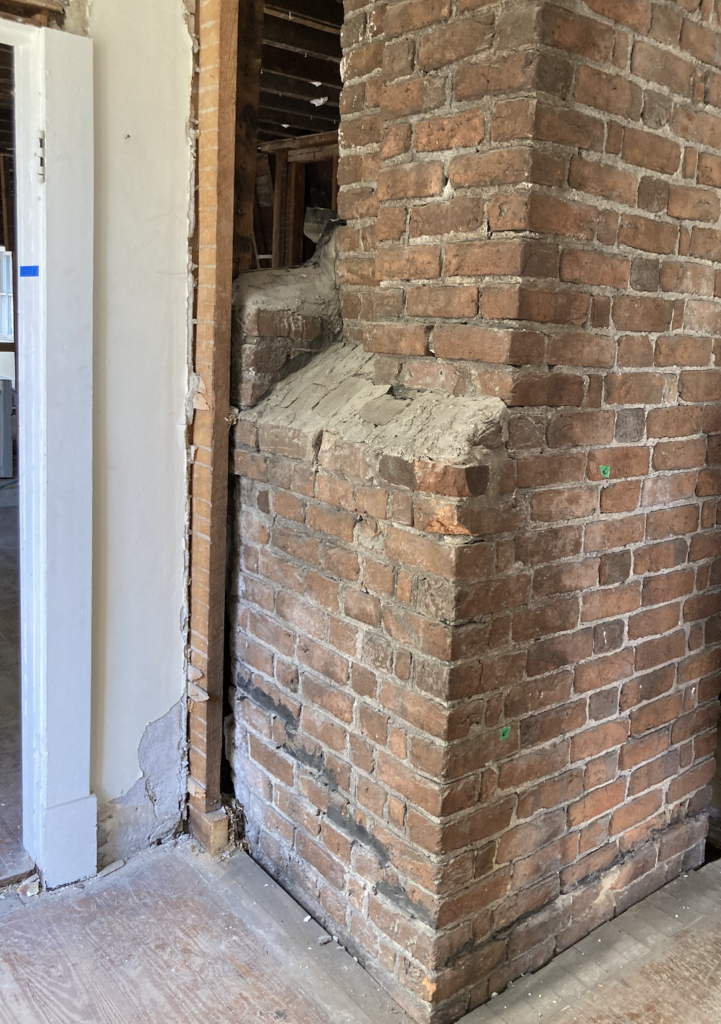
photo courtesy of Emily Muscolina
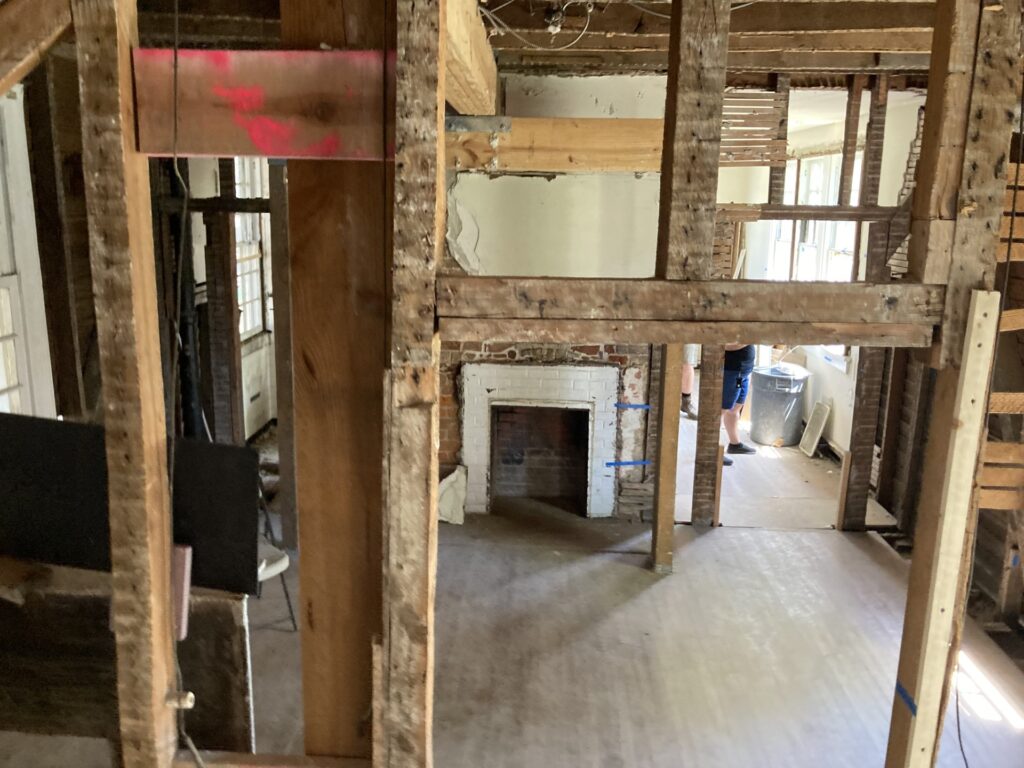
photo courtesy of Emily Muscolina
Not so far down the street was the original site of the school. Here, discoveries were also being made in archaeology. Our class crammed into the small yard of William & Mary’s Brown Hall (now Gates Hall), where square holes were dug into the dirt. Over the years since then, this dirt has continued to reveal secrets that had been buried for over 250 years, giving us insight into the real lives of the children who attended the school and others who lived on the site many years after.
The magnitude of the historical implications that the Bray School offers stuck with me, convincing me to join the Bray School Lab in early 2025. The Williamsburg Bray School Initiative is a fully-fledged partnership of discovery between William & Mary and Colonial Williamsburg, and is, at its heart, a community project. This project brings together architectural historians, archaeologists, Bray School descendants, academic and public historians, college students, K-12 teachers, and visitors, among many, many others. Here, history is literally made for everyone.
~
An interesting thought occurred to me a year ago: What percentage of the Black population was literate in the Early Republic and antebellum United States? The answer to this question would have many implications. Considering the importance of the printing press in early America, literacy gave individuals more agency of their own. Literacy enabled people to make sense of the world around them and to act accordingly. Especially during the Age of Revolution, new ideas of human rights were circulated across the Atlantic World through the written word. People involved in this literature-fueled discussion became part of the conversation of liberty, thus politicizing literacy and education. Politically, education is fundamental to securing and maintaining freedom. Literacy is one of these pathways to freedom, making it a key tool to resist slavery.
When I began volunteering, I was invited to work on the Lab’s new project to map the literacy of enslaved Virginians. I was fortunate that the task I was assigned would help to answer my question. However, I was surprised to learn that there had not been more research conducted on the topic of early African American literacy. Because literacy is a pathway to freedom, I expected it to be more researched. The Bray School gave me an opportunity to give attention to an important topic as well as conduct quantitative and qualitative research on a question I am curious about.
The Bray School Lab’s current research on literacy consists of sifting through collections that may have relevant information. The collections vary in type and format. Personally, I have read the WPA Virginia Slave Narratives and portions of the Virginia Gazette database. Currently, I am sorting through the 1869 book Education of the Negro: History of Schools for the Colored Populations. This source is particularly interesting because of its publication date soon after the ratification of the 13th Amendment, as well as its length of nearly 300 pages. A lot of data can be found in this source, but I have been finding it helpful to cross-reference with more up-to-date scholarly sources to confirm literacy.
There are currently 175 student-generated entries concerning enslaved Virginians in the 18th and 19th century that the Lab is now vetting. Many reports of literacy come from runaway ads. Besides those ads, there are a fair number of self-reports made through collected oral histories and slave narratives. These reports have a common denominator: they are collected by white people. Knowing who is telling the story signals to us the historical limitations of our research. In this case, education differentiates literate black people in white perspectives since black education directly challenged white supremacy in early America due to the potential freedoms it offered.
The Bray School Lab’s current literacy mapping project is essential to understanding the degrees of freedom in Virginia. I am excited to see the results of the project so that we can better understand for whom and how liberty could be used in a time of extreme oppression.

Emily Muscolina ’28 is a William & Mary sophomore majoring in history. She has a concentration in Early American history with a goal to continue her studies in graduate school. Emily is currently involved in NIAHD’s public history program and is honing her research and teaching skills to share complex histories.

